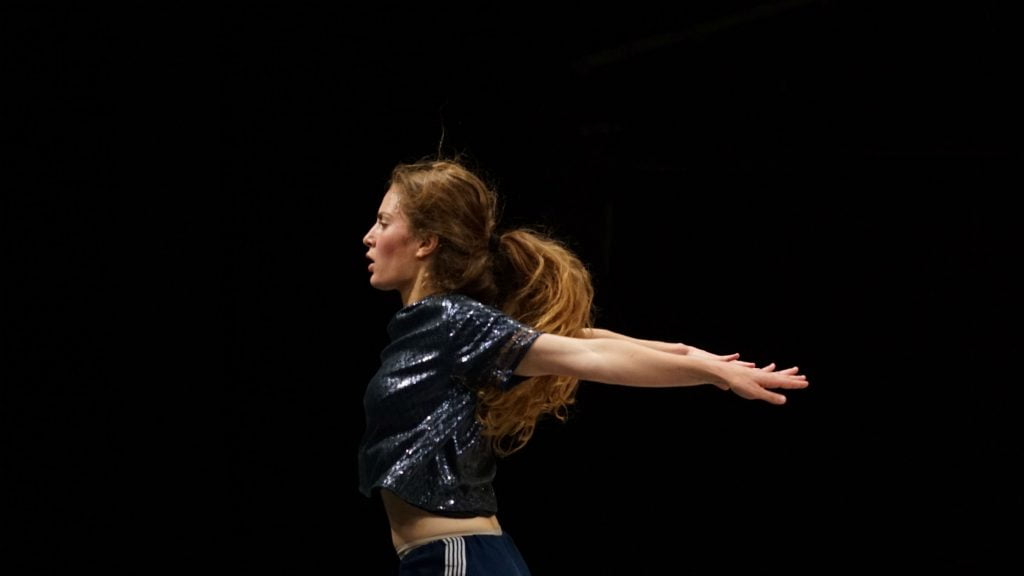
- News
Interview Yasmeen Godder
Can you introduce yourself?
I’m a choreographer, performer and the artistic director of my company. I spent the first half of my childhood in Jerusalem and the second half in New York, where I also took my first steps as an independent choreographer. For the last 18 years I’ve been based in Jaffa, Israel, where I have a studio and where my company engages in a variety of processes, collaborations and projects.
What drives you to be creative?
The passion for expression and the desire to create an alternative dialogue – one that goes beyond the conventional, daily and accepted means of communication. I’m drawn to creating mental and emotional processes that will allow us to re-examine and meditate upon themes we take for granted. I love working and spending time with other creative people via the body, imagination, and the intellect.
The performance Common Emotions is an outcome of a long project with sufferers of Parkinson’s disease. How did this feed the performance?
In 2015 I began a year-long collaboration with Theatre Freiburg titled Storung/Ha’fra’a which included my dancers and collaborators holding weekly dance classes for people with Parkinson’s disease. The premise was to have the studio as a place for sharing, and using the expertise of dance to find ways to experience physicality, joy, interaction and interactivity in a multi-generational environment. Having people who live with Parkinson’s disease come into the studio once a week and spending time improvising and dancing together with my company members, made me aware of how much we are used to seeing only a very particular kind of physical state in the studio and on stage.
I became interested in sharing the dance professionals’ depth of knowledge as a tool that could have a strong impact on bodies less familiar with these practices. And in letting these other expressions and bodies teach us new ways of perceiving what we do. It was inspiring to see different ages and physical states engage in moving, acting, fooling around and creating.
As a result I introduced some of these qualities into Common Emotions, by offering real interaction between the dancers and spectators as the performance unravels. I also wanted to create a work that could make use of the performers’ knowledge and training in leading processes and classes to different communities – giving it visibility as actual content.
Why did you make a participative performance?
When I made it I wasn’t thinking about it as “participative” but rather as a work that makes physical processes visible, exposes the audience to their own, and makes them aware of how these impact their spectatorship. So the emphasis is not necessarily on the active participation, but rather on using the common space of performance for another kind of interactive meeting. In addition I wanted the performance to show how groups congregate and connect in real time and let people experience this.
Do you notice a difference in audience (participation) between different countries and/or cities?
So far Common Emotions has been performed in different cities in Israel and Germany and also in France and Italy, and the response for the most part has been similar. Perhaps it differed in nuances but for the most part we find a general consistency in the response. And the work is built in a way that has an accumulative and viral effect of people joining and sharing, despite any preliminary worries and skepticism.
Most of your performances seem much harder in their movement material than Common Emotions. Why were you fascinated by something like “common emotions”?
With Common Emotions I wanted to begin with a “neutral” movement phrase, so that the emotional effect would be more visible for audiences. Like in a science experiment, where the premise is kept as simple and neutral as possible, in order to see the impact of the proposal. If the movement material were complex to begin with, carrying a lot of emotion and layered (in the way that most of my work is), then it would be hard to see how the different emotional trials/workshops/rituals proposed by the dancers impact the work.
Artists from Israel are often seen and interpreted in the context of the political situation of their country. How do you deal with this?
It is not easy to always be seen through this prism….and it definitely challenges me. I try to stay connected to my processes and hope that the work in its complexity will speak beyond the stereotype – perhaps even break it. And sometimes it prompts me to actively engage with these questions and thoughts. In the case of Common Emotions, my initial interest came out of questioning how people connect emotionally, in positive situations but also in negative ones. The impulse for the work came out of the divided political situation in Israel, where identification and belonging to a particular group is so embedded in emotional connectivity from a young age and is related to a particular group or a narrative. And I find this content to be relevant to many different social and political situations in a wider scope.
If you hadn’t become an artist, what would have been your profession? And why?
I don’t think I could imagine not being an artist. However if I weren’t working in dance I would probably be in the visual arts. That, or a farmer…